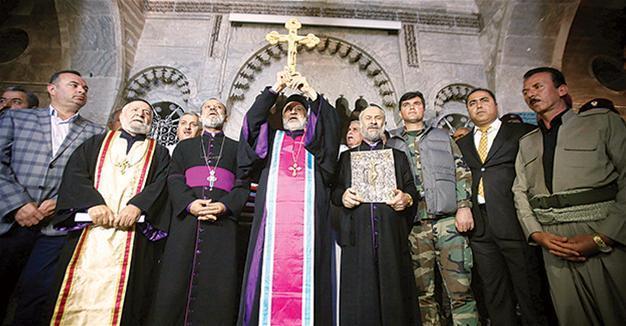Church in northern Iraq reopened after two years under ISIL control
BASHIQA, Iraq – Reuters

REUTERS photo
The bells have rung out after two years of silence in the Mar Korkeis church in the town of Bashiqa, some 15 kilometers (10 miles) north of Mosul, the Islamic State of Iraq and the Levant’s (ISIL) last major city stronghold in Iraq.
Kurdish Peshmerga fighters retook the town on Nov. 7, ending two years of rule by the hardline Sunni group which persecuted Christians and other minorities in the Nineveh plains, one of the world’s oldest centers of Christianity.
Women trilled to celebrate the moment when a new crucifix was erected on the church, replacing one that was broken by ISIL militants.
The town is largely empty as the Peshmerga have not finished clearing explosives and mines left behind by the insurgents in their fight against U.S.-backed Iraqi and Kurdish forces who launched an offensive on Mosul on Oct. 17.
“We want people to be patient and not to return here until we completely clear the area, as we want to ensure their safety,” said Peshmerga Brigadier General Mahram Yasin.
After seizing the Nineveh plains in 2014, ISIL issued an ultimatum to Christians: pay a tax, convert to Islam, or die by the sword. Most abandoned their homes and fled to the nearby autonomous Kurdish region.
The priest at the Mar Korkeis church, Father Afram, said he would prefer Bashiqa to remain under the control of the Kurdistan Regional Government (KRG) and not revert to the Iraqi central government in Baghdad, about 400 kilometers (250 miles) to the south.
“Of course we would prefer to be part of the KRG, because of our proximity to the area and because, for the past 13 years, the regional government has been looking after us,” he said.
“Nobody from Baghdad came here to say hello, at all,” since the U.S.-led invasion that toppled Iraqi leader Saddam Hussein, he said.
Christianity in northern Iraq dates back to the first century AD.
